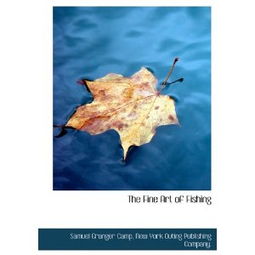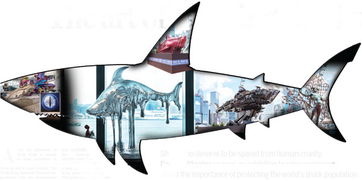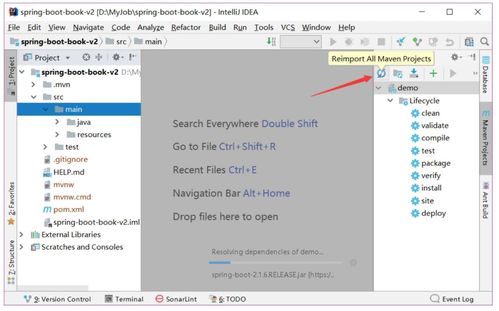Introduction:
Fishing is an ancient pastime that has been cherished by millions around the world. Whether you're a seasoned angler or a beginner looking to cast your line into the water, mastering the art of fishing can be both rewarding and enjoyable. In this article, we'll delve into some essential fishing techniques, accompanied by detailed illustrations, to help you improve your skills and catch more fish.
Choosing the Right Equipment:
Before you can start fishing, it's crucial to have the right equipment. Here's a quick guide to the essential gear you'll need:
Rod and Reel:
- Graphite Rods: Lightweight and sensitive, perfect for detecting subtle bites.
- Baitcasting Reels: Ideal for casting heavier lures and baits.
- Spinning Reels: Suitable for lighter lines and baits, great for beginners.
Line:
- Monofilament: Durable and flexible, suitable for a variety of fishing environments.
- Braided Line: Strong and thin, offering more sensitivity and less stretch.
Hooks:
- Screw-in Hooks: Easy to change and suitable for a variety of fishing techniques.
- Circle Hooks: Less likely to pull out of a fish's mouth, ideal for catch-and-release fishing.
Baits and Lures:
- Live Baits: Natural food sources like worms, minnows, and leeches.
- Artificial Lures: Designed to mimic the movement of real fish, attracting predators.
Casting Techniques:
Casting is a fundamental skill in fishing. Here are some key techniques to help you cast effectively:
Overhand Cast:
- Hold the rod with both hands, with your dominant hand near the reel.
- Swing the rod back with your dominant hand, keeping your wrist straight.
- Accelerate the rod forward, releasing the line as you reach the desired distance.
Sidearm Cast:
- Hold the rod with your dominant hand near the reel.
- Swing the rod to the side, keeping your wrist straight.
- Accelerate the rod forward, releasing the line as you reach the desired distance.
Roll Cast:
- Hold the rod with your dominant hand near the reel.
- Swing the rod back, keeping the line tight against the rod.
- Roll the line forward with your wrist, releasing the line as you reach the desired distance.
Bait Presentation:
The way you present your bait or lure can make a significant difference in whether you catch fish or not. Here are some tips:
Natural Movement:
- Mimic the natural movement of the baitfish or prey you're targeting.
- Use a slow, erratic retrieve to attract curious fish.
Timing:
- Pay attention to the timing of your retrieves and pauses.
- A sudden pause or a quick twitch can trigger a strike.
Depth:
- Adjust the depth of your bait or lure to match the feeding level of the fish.
- Use heavier lures or heavier line for deeper water.
Reading the Water:
Understanding the water you're fishing in is essential for success. Here are some tips:
Water Flow:
- Observe the water flow and current patterns.
- Fish often congregate in areas with slow or still water.
Structure:
- Look for underwater structures like rocks, logs, and weeds.
- Fish often use these structures for cover and to ambush prey.
Cover:
- Identify areas with cover, such as fallen trees, brush, and rocks.
- Fish often hide in these areas to avoid predators.
Setting the Hook:
Once you've attracted a fish, it's crucial to set the hook properly. Here's how:
Reeling In:
- Start reeling in gently, allowing the fish to take the bait.
- Keep a tight line, but avoid reeling too fast, as this can spook the fish.
Setting the Hook:
- When you feel a tap or a pull, wait for a moment to see if the fish is just testing the bait.
- Once you're sure the fish is interested, quickly lift the rod tip to set the hook.
- Keep the rod tip up and reel in steadily, guiding the fish towards the boat or shore.
Landing the Fish:
Landing a fish safely is important for both the fish and your own enjoyment. Here's how:

Approach:
- Approach the fish from the side, keeping your shadow away from it.
- Keep your movements slow and gentle to avoid startling the fish.
Netting:
- Use a landing net to gently scoop the fish out of the water.
- Avoid touching the fish's gills or eyes, as this can harm it.
Release:
- If you're practicing catch-and-release, handle the fish carefully and release it quickly.
- Keep the fish in the water until it regains its equilibrium and swims away.
Conclusion:
Fishing is a skill that takes time and practice to master. By following these tips and using the provided illustrations, you'll be well on your way to becoming a more skilled angler. Remember to always respect the fish and the environment, and enjoy the peacefulness and serenity that fishing has to offer. Happy fishing!












